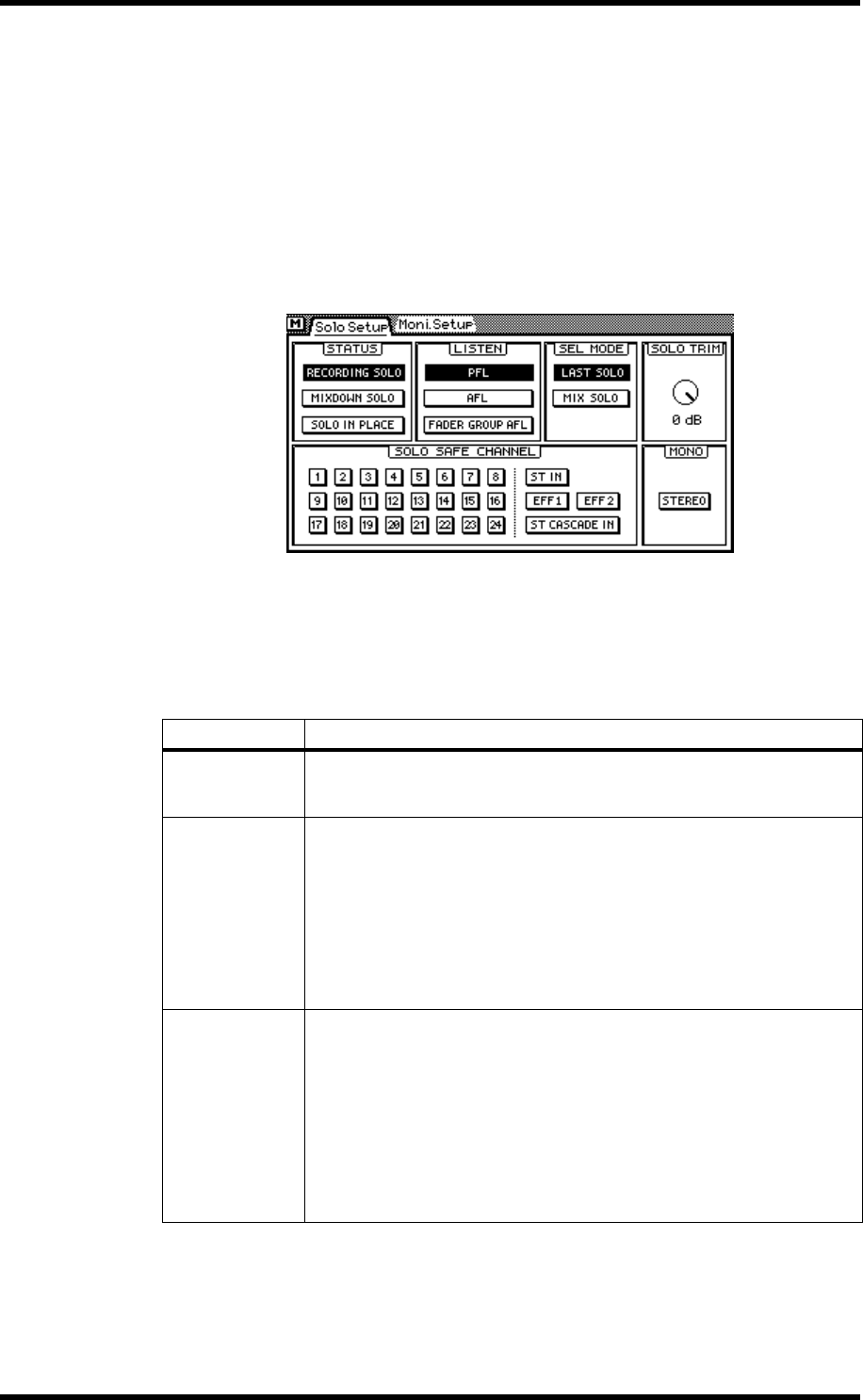
Setting Up Solo 75
03D—Owner’s Manual
Setting Up Solo
The Solo Setup page is used to set up the solo functions used to monitor input channels,
the stereo input channel, and effects returns. Three solo modes are available: Recording
Solo, Mixdown Solo, and Solo in Place. These modes are used in conjunction with the
[SOLO] and [ON] buttons, which are used to select channels. The Solo Setup page is
used only to set up the solo functions. You do not need to select it in order to use the
solo functions.
1. Use the [SOLO SETUP] button to locate the Solo Setup page shown
below.
2. Use the cursor buttons to select the parameters, and the [ENTER] button
and PARAMETER wheel to set them.
If you are using a mouse, simply click the switches and drag the rotary control.
STATUS—These switches are used to select the following solo modes: Recording Solo,
Mixdown Solo, or Solo In Place.
When 03Ds are cascaded together using YGDAI CD8-CS cascade cards, the status set-
tings can be made only on the cascade master (IN setting), not the cascade slave (OUT
setting).
LISTEN—These switches set the monitor signal source to pre-fader (PFL) or post-fader
(AFL). This is a global setting that affects all input channels, the stereo input channel,
Status Description
Recording Solo
• Soloed channel signals are sent to the Solo bus and then output to the
monitor out and phones.
• This allows you to monitor channels that are not routed to a bus.
Mixdown Solo
• The Stereo bus signal is fed to the Solo bus and then output to the
monitor out and phones (the stereo output, monitor out, and phones all
output the same signal).
• Only channels that are soloed are turned on. All other channels are
muted. Solo safe channels remain as they were before solo mode was
engaged.
• Channels that were turned off before the [SOLO] button was pressed
are turned on when soloed. This means that so long as they are routed to
the Stereo bus they can be monitored.
Solo in Place
(this mode is
essentially a
combination of
the Recording
and Mixdown
Solo modes)
• Soloed channel signals are sent to the Solo bus and then output to the
monitor out and phones.
• This allows you to monitor channels that are not routed to a bus (same
as for Recording Solo mode).
• Soloed channels that are turned on are output as usual to destinations
other than the monitors, just like when they are not soloed. Channels
that are not soloed, however, are muted. Solo safe channels remain as
they were before solo mode was engaged. This means that even chan-
nels that are not routed to a bus can be monitored (this is different to
Mixdown Solo mode).


















